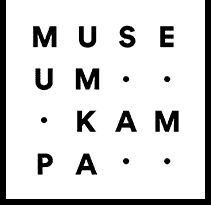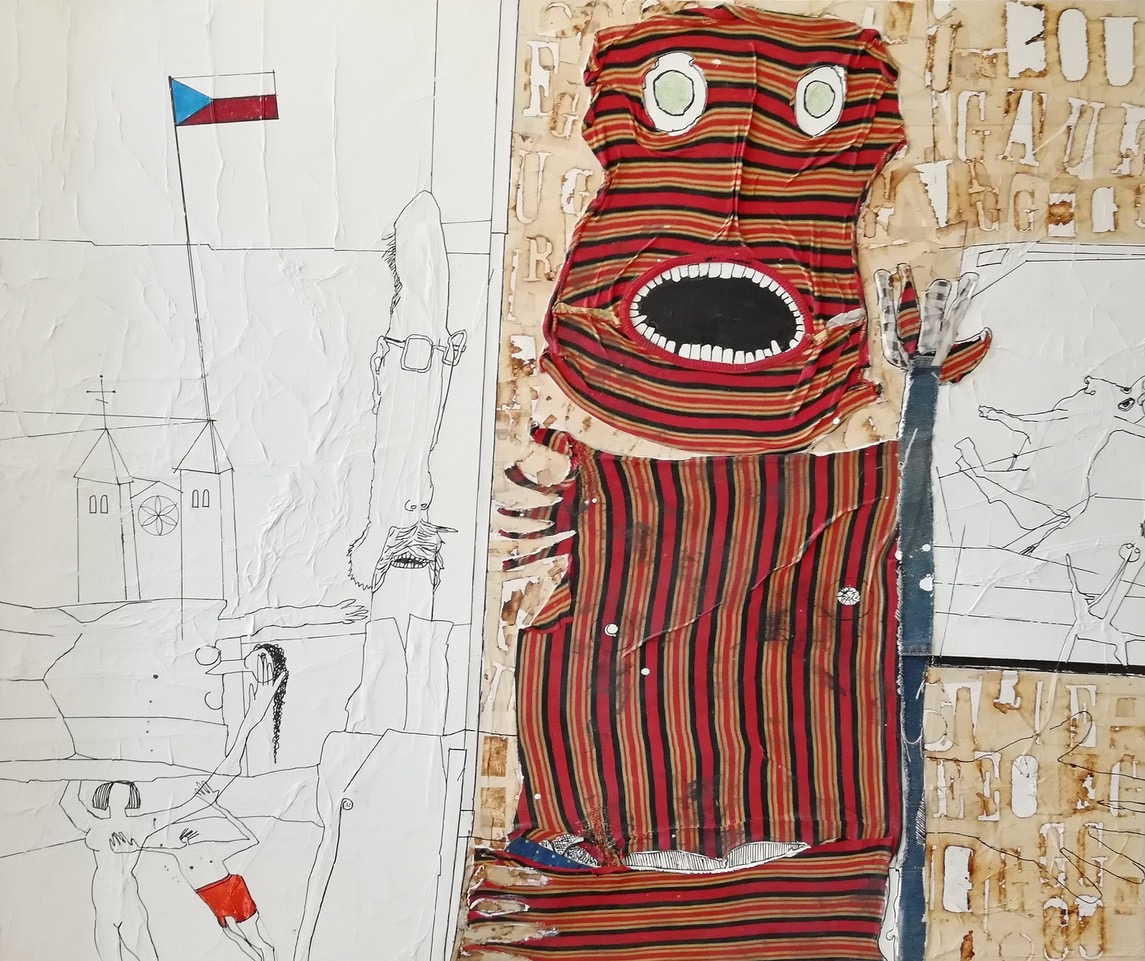The artistic path of the versatile artist Eduard Ovčáček (*1933) has been defined from the beginning by his interest in two thematic areas – the visual and poetic reflection of script and signs, for which the name Lettrism was established; and the possibilities of artistic interpretation of the human figure. The two thematic lines, developed in a wide range of artistic media (from printmaking, painting, drawing and collage through photography and photographics to sculpture and installation), are mutually intertwined and testify to the multifaceted and inventive personality of the artist and his keen interest in technological and artistic experimentation.
An interesting and hitherto not very often exhibited area of Ovčáček’s work is represented by paintings and drawings in which the element of the grotesque asserts itself in the figural theme. Prominent examples include paintings and assemblages created during the 1970s and 1980s, in which the artist projected the mundaneness and absurdity of reality, the perversity of the kleptocracy, and the dullness and emptiness of public discourse. Typical examples include the paintings Strašidlo na hradě (Ghost in the Castle, 1981) and Dva na tribuně (Two on the Tribunal, 1979) from the collections of Museum Kampa, in which the artist used quotations of national symbols to express the bizarreness and morass of the period in question.
Not only does Ovčáček’s specific language of humour and exaggeration, very often laced with a note of tragicomic, sarcasm and vicious mirth, target the leaders of the contemporary regimes and the key moments of the dark era in Czechoslovak history; it also mirrors ordinary interpersonal relations and conditions, not only in the difficult times of ‘normalisation’ and the Communist rule, but also in the times of hastily acquired freedom in the early 1990s (Veselý a šťastný muž – Kelt [The Celt: A Merry and Happy Man, 1990-1991).
Ovčáček enhanced the visual impact of his ‘sadly cheerful’ works with his characteristic experimental approaches. In addition to acrylic painting, he developed the method of assemblage of various textiles, layering of hand-milled paper, burning, engraving and imprinting. In the case of his drawings, he would happily use the raw aesthetics of asphalt stains, which he transferred to the paper surface through direct impression from the water surface, and which he then finished with a thin line of drawing (Loutky [Puppets, 1987]). With his liberal treatment of artistic techniques and his peculiar stylization of the shapes of the human body, which went back to ancient models and the anthropomorphic register of primitive art, Ovčáček depicted the human destiny in the second half of the 20th century not only in the socio-political context of the time, but also in a broader context of spiritual, historical and cultural traditions.
Ilona Víchová
Artwork:
Eduard Ovčáček
Ghost in the Castle, 1981
collage, drawing, acrylic on canvas
85 x 100 cm
Museum Kampa – The Jan and Meda Mládek Foundation
©Photo: Oto Palán

